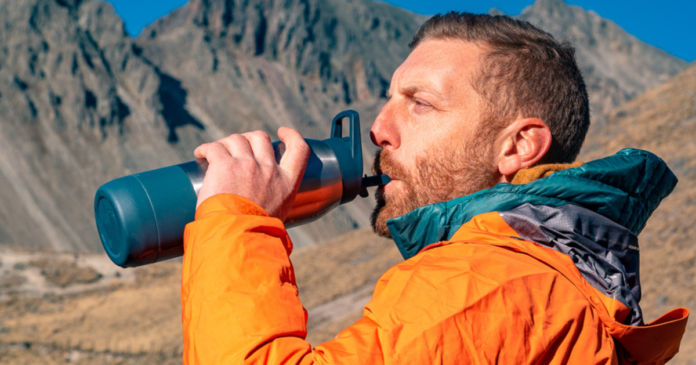Selecting your water backpacking water filter can be one of the most crucial decisions you make. It's tough to think of a higher priority for a safe and fun hiking experience than clean drinking water.
Thankfully, these methods/gadgets don't cost an arm and a leg, and most of them are exceptionally packable. I review and compare some of the best selling brands on the market. Several of these water filters or purifiers just so happen to be my preferred approaches. So raise your glass of fresh water and cheers with me to the wonders of modern backpacking technology. Let's begin.
The difference between water filters and water purifiers?
The key difference is that backpacking water filters generally do not treat viruses. They're great for getting out bacteria, protozoa, sometimes things like micro-plastics and heavy metals. Purifiers, on the other hand, will take care of those viruses, as well as many of the aforementioned buggers. The exact profile and effectiveness will vary depending on the product. It's best to check each brand's website for full details.
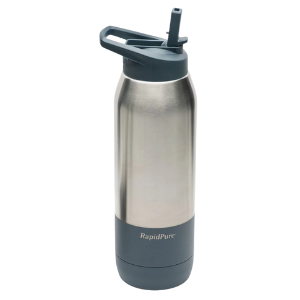
Does the Rapidpure water filter really work?
The Rapidpure filtration system is a newer product on the market. The purifier acts within an insulated, stainless steel water bottle. This makes it a little on the heavy side but the advantage is that it is durable and can handle freezing temperatures better than some of these other guys – in some cases much better, as certain filters become unusable if they freeze, even once.
The Rapidpure's removable filter can withstand those chilly nights and still treat the quadruple-threat of viruses, protozoa, parasites, and bacteria. This makes for a reliable system that improves overall peace of mind. With one of those more vulnerable models, you would have to be conscious of the conditions. Probably sleep with it beside you. Be aware that if it freezes while in storage, it may not do its job come your next adventure. The advantages of the Rapidpure do come at a cost. Aside from the extra weight, the $99 (USD) price tag is also on the upper end.
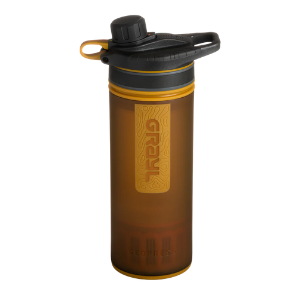
Does Grayl filter pesticides?
I've had the Grayl GeoPress Purifier in my arsenal for a few years now and have been very pleased with its performance. This latest model ($99.95 USD) is a little bit smaller; down from just under a liter to a sleaker 710 milliliters volume. I have to say, I actually preferred the larger capacity. It saved having to refill it as often (even if that meant carrying a bit more weight). Nonetheless, the system uses an effective and unique plunger method to filter water. It takes a bit of strength to do, but nothing crazy.
The GeoPress is a purifier and not a backpacking water filter. It purifies viruses (as well as bacteria and protozoa) and filters pesticides, chemicals, heavy metals, and micro-plastics. This system makes for a great international travel buddy. Buying bottled water is a common practice in many countries. If you're not a fan of the waste/cost, the Grayl GeoPress can help whenever you're uncertain of the water quality. The advantage of the GeoPress over a straw style (which requires sipping) is that you can redistribute the clean water. So that you can filter multiple liters at a time, or pour a cup for your partner.
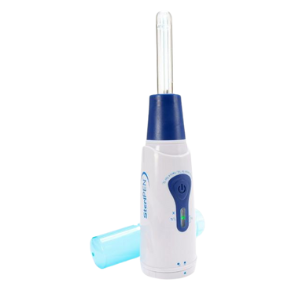
What is a SteriPEN and how does it work?
The Katadyn SteriPEN is a completely different system than any other item on this list. The other filters/purifiers work by pulling the contaminants out of the water. The SteriPEN instead relies on UV light to neutralize backcountry goons like bacteria, protozoa (including giardia and cryptosporidia), and yes, even viruses. The light is battery-powered (4AAs), so make sure to pack extras for a longer trip, and does its thing while being stirred around in your water bottle.
Note that the pen needs to be able to fit in your bottle, and so something with a wide cap (like a Nalgene) is needed. Also, be sure to check the time that is needed to purify different quantities of water. Finally, understand that the SteriPEN, on its own, will not remove debris from your water. If you're not a fan of the extra textures, you can use the prefilter when obtaining the water. Or take special care to collect your batch from clean-looking, faster-moving water sources.
The SteriPEN once again rings in at $99 (USD). Its packability is certainly an advantage (though the weight with batteries is comparable to other products). I said before, there can still be some particulate in your water. If any invisible nasties are hiding behind bigger pieces, then they may not come in contact with the light, and therefore may not be entirely wiped out. If your water is clear, you can have confidence in the purification quality. I am left wondering and crossing my fingers. The SteriPEN has been on the market for a long time and has certainly built up a more trusting group of followers.
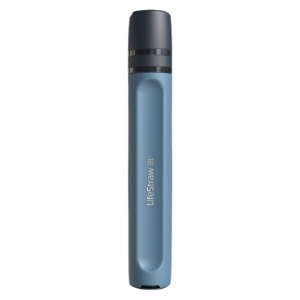
Can you drink any water with LifeStraw?
The Lifestraw falls into the classic backpacking water filter category, and so it can be relied upon for bacteria, parasites, and microplastics, but not viruses. This will cover many water sources in the wild, but not the full-spectrum of real-world ones. Because of its packability, Lifestraw is another long-standing, popular choice amongst hikers. You've probably seen the ads with someone plopped down by a river, sucking straight from the source.
I can attest that the straw does not require much effort to draw up the water. I don't look forward to getting down on my belly every time I need a drink. The Lifestraw can also attach to a water bag hoze and do a slower-burn gravity filter while you wait around at camp. Otherwise, you can always just scoop the water into something else and dip the straw in there instead. This option is by far the cheapest on this list ($20 USD). That advantage can't be overlooked. I'm not personally as big of fan of the Lifestraw. I can see its utility, especially if used throughout the day in conjunction with one of these other purification/filtration methods.
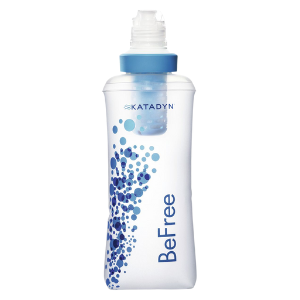
What does Katadyn BeFree filter do?
The Katadyn BeFree removes bacteria (including giardia), cysts, and sediment, but not viruses. Again, since this covers much of the backcountry spectrum, the easy-to-use and collapsable BeFree backpacking water filter is a favorite amongst thru-hikers. At only $45 (USD) this is also one of the more economical choices when it comes to treating water.
I like how the bottle is both suction operated (like the Rapidpure) and squeezable. This speeds up the flow and allows for transfering the water to other outlets. The drawback, by my assessment, is that the flexible bottle is vulnerable to punctures and slices. Be sure to keep an eye out for where and how you're stowing it, and have a patch kit with you in case it fails.
I hope this rundown helped you make sense of the various water filtration/purification options that are out there. As with all backpacking gear, there are pros and cons to just about everything. Thankfully, buying a new treatment device is nowhere near as expensive as shopping for a new tent, pack, sleeping bag, etc. So test out what works best for you, and maybe even consider multiple approaches if your adventure calls for it. In any case, stay hydrated!
For more tips, reviews, and backpacking goodness, check out BackpackingTV.
Disclaimer: This article contains affiliate links in which Eric Hanson earns a small commission at no additional cost to you, but it is a great way to show your support. Thanks!



